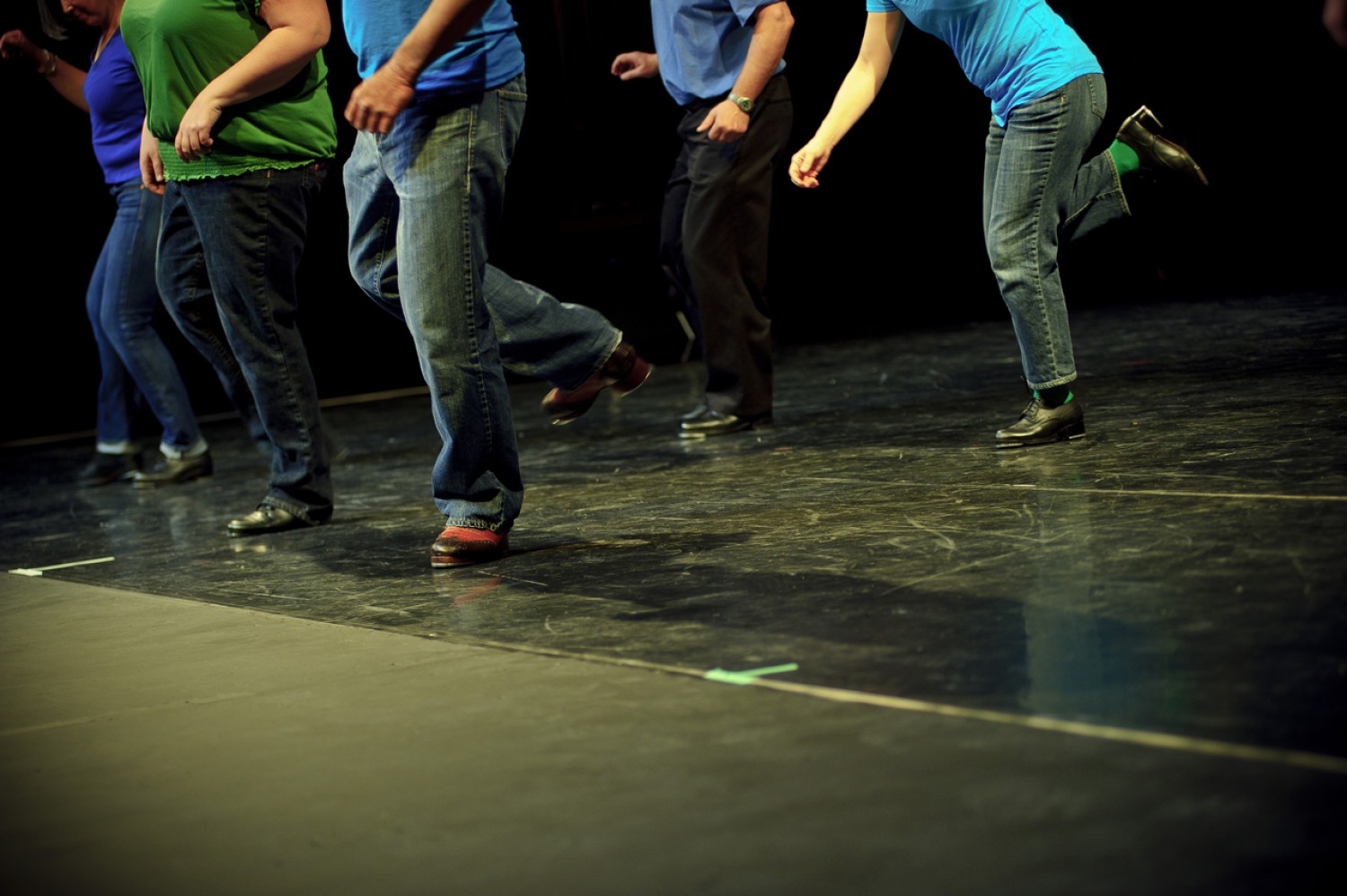5 Ways to Not Fall Down

It can happen anytime: One minute you’re flying across the floor, lost in the music and the momentum, and the next – BAM! Your sprawled in a very un-graceful position on the floor, with a sore tailbone to-boot.
We’re so used to walking from place to place, we often forget how long it look to master this now-effortless movement. A lot of complicated body mechanics come into play when we move, and we need to revisit them with every dance step we learn.
1. Stand tall.
Before we even move, posture is crucial. Our body can be divided into blocks of weight – head, torso, hips, knees, and feet – that must be positioned above each other. If anything is out of alignment, our body needs to work harder to keep itself upright, and it’s less likely to recover if we start to slip. Just one more reason why nobody likes a sloucher.
2. Match your momentum to your step.
One of the beautiful elements we take for granted when we walk is how comfortably our forward momentum matches the size of the steps we take. Too little momentum, and we’ll rock back on our heels. Too much, and we ‘overbalance’, ending up on our toes, or worse, needing to take an extra step to recover. If this sounds familiar, it’s worth taking some time finding the right momentum for your trickier steps.
3. Drive a wedge into the floor.
If we want to take a side step and stop, often the technique calls for us to ‘dig in’ with the inside edge of our stepping foot, then roll onto it to ‘kill’ our momentum. This makes it a lot easier, especially in ballroom dancing, to travel quickly sideways while still able to stop on a dime. Definitely worth a look if you tend to fall sideways on those cha cha basics.
4. Change direction from your centre.
Turns and other direction changes are a huge part of any dance: Make sure yours don’t send you spinning to the floor by turning from the centre of your gravity. Different styles of dance use different ‘centres’, but it’s often located around navel or solar plexus level. When retraining your body to rotate using your centre, it helps to initially imagine you are holding a keg of ale, or a newborn child (depending on what you need that day) at the same level as your centre. Now focus on supporting that imaginary load, and gently throw it around your body to make the turn. Be gentle though – newborns are fragile 😉
5. Counterbalance your energy.
If something is leaning one way, something else must lean another way to keep you from tipping over. A waltz dancer can only maintain her arched back if her knees stay soft and her hips engage towards her partner – the upper and lower body counterbalance each other. Likewise, with any position or motion you make, remember you must have equal and opposite energy if you want to stay in place.
About the Author
Ian Crewe has been dancing ballroom for over 18 years, and has a Licentiate in American smooth and rhythm. His passion for dance and his endless seeking for ways to reach new audiences eventually led him to blogging and the World Wide Web. Ian currently teaches at the Joy of Dance Centre, Toronto, ON, Canada.

